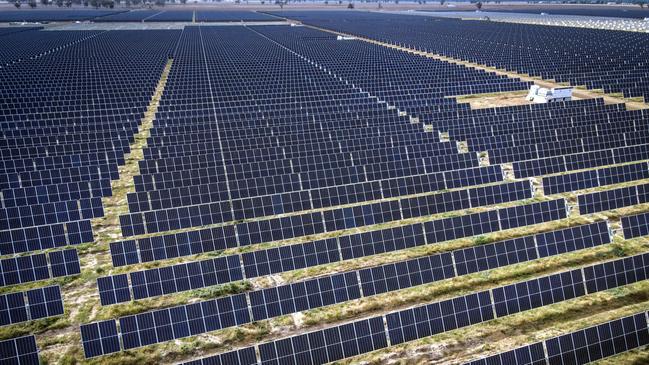Renewable energy developer Intercontinental Energy raises $180m to accelerate green energy
Intercontinental Energy, the developer behind one of Australia’s largest proposed green energy projects, will fast track construction after raising nearly $180m to cash in on hydrogen demand.

The Intercontinental Energy will accelerate development of its giant zero-emission projects after raising $US115m ($180m) from the Singapore sovereign wealth fund and one of the world’s biggest pure hydrogen investors, Hy24.
The Intercontinental Energy is developing one of Australia’s largest renewable energy projects, and the injection of fresh capital will accelerate the construction of a project that would cement Canberra as one the world’s dominant hydrogen exporters.
The Australian Renewable Energy Hub (AREH) in outback Western Australia would develop up to 26 gigawatts (GW) of wind and solar power capacity which could be used to produce 1.6 million tonnes of green hydrogen or 9 million tonnes a year of ammonia into which hydrogen is super chilled to allow its transport by ship.
Green hydrogen is produced when renewable energy is used to power electrolysis of water into its core elements.
Last year, BP agreed to buy 40.5 per cent of the project – a key pillar of the oil giant’s target of grabbing a 10 per cent share of the global hydrogen market and BP is now the operator of the project.
InterContinental Energy chief executive and chairman Alex Tancock said the fresh investment would bolster the development of its projects.
“Bringing these huge investors and investment will help us accelerate the work we are doing, which ultimately will be critical for Australia’s national hydrogen strategy,” Mr Tancock said.
AREH is expected to be online by 2029, when the first phase of 4GW of renewable energy is finished. The two other phases of 6GW of green hydrogen and 14GW of ammonia for exports would be developed over the next decade, which Mr Tancock said would coincide with a rapid expansion in demand and allow the project to displace LNG.
Major buyers of Australian LNG such as South Korea and Japan have set ambitious hydrogen targets. South Korea wants to grow domestic annual consumption from 130,000 tons in 2018 to almost 5.3 million tons by 2040. Japan earlier this year said it wants to import 12 million tonnes. by 2040 – a significant increase on its previous target of 3 million tonnes.
“The same customers that are buying LNG from Australia will be customers – so predominantly north Asia, but we also have the opportunity to work with the Pilbara to create new jobs which can be unlocked by cheap energy,” Mr Tancock said.
WA has abundant supplies of almost all of the government’s critical minerals list, including alumina, cobalt, lithium and graphite which are in demand due to global efforts to produce batteries and renewable energy projects to wean from fossil fuels; and cheap energy will unlock many proposed projects.
While the Intercontinental Energy is bullish about the future of hydrogen, there is some doubt – particularly with the federal government – about the future of the fuel source.
The government has set aside $2bn to offer seed capital to hydrogen flagship funds, although critics insist the government is not acting urgently enough.
Much of the seemingly tentative support is being driven by uncertainty within the government about the future of hydrogen.
Australia is widely seen as having natural advantages in the production of so-called green hydrogen, with its abundant land mass and plentiful amounts of sunlight to develop renewable energy that could be used to power the splitting of water into core elements.
But hydrogen is some way from being commercially viable, and there are widespread views on the end uses.
Some see green hydrogen as a fuel source that could replace LNG, while others think it will be a much smaller market, although still an extremely lucrative one.
For green hydrogen to be viable, there will need to be a rapid increase in renewable energy, but Australia is struggling to develop the generation quickly enough.
Others see Australia as better served by exporting renewable energy. Billionaire Mike Cannon-Brookes has proposed a $30bn renewable energy project that would result in the creation of Australia’s largest solar farm near Tennant Creek in the Northern Territory and then move the clean energy to Darwin via a 6.4GW, 800km overhead transmission line. The energy would be supplemented with 36-42 gigawatt hours of battery storage.
The energy would then be transported to Singapore via a 4200km undersea cable. But at more than five times bigger than the longest submarine link yet proposed – the 767km Viking link between the UK and Denmark – there is scepticism about the engineering feasibility, while others question the sovereign risk as it would cross near Indonesian territorial waters.




To join the conversation, please log in. Don't have an account? Register
Join the conversation, you are commenting as Logout